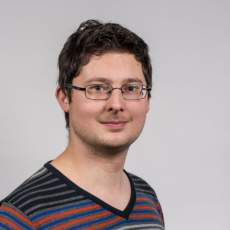Insights from Teaching 360 Students in Energy Storage and Transport
Interview with Clemens Verhoosel, Head teacher of Mechanical Engineering about the Bachelor course Energy Storage and Transport (4CBL30) for 360 students.
Understanding the time-dependent behavior of a system is essential in many engineering applications.
Models are used to analyze the time-dependent behavior of systems. To familiarize students with the full cycle of model development, this challenge-based project is set in the societal context of energy transition.
The course’s scalability may be of interest to other educators. This team of teachers can deliver a high-quality open course without requiring more time than a smaller group.
Q: So, how does a course with 360 students differ from smaller courses?
Clemens: “Actually, there’s no fundamental difference between running a course with 40 students or 400 students, you just have to be more precise in the organizational part. If you can run your course with a small group, you can also run it with a large group. Of course there are limits. I think when you get to 1000 students, the set-up might change”.
Q: What advice do you have for other teachers who will be running a course with a large group of students?
Clemens: "You have to be really strictly organized. If you do something wrong with 70 students, you’ll get a couple of emails, if you run a course with 370 students you'll spend the whole morning fixing your mailbox. We also have a teacher supporter who is responsible for organizing all meetings, taking attendance and coordinating the tutors.
You also need to have a consistent assessment procedure. We have rubrics for just about everything. We share our rubrics with the students. From day one we actively encourage students to ask questions also about the rubrics so that they become familiar with them. We have also standardized the feedback students receive about their scores on the rubrics. This not only allows us to work efficiently, but also creates consistancy between teachers. And we have limited the length of students’ submissions. So we are very clear about our expectations of the students.
Q: What other approach would you recommend?
Clemens: “When working with open-ended courses like this, it is very important to keep the feedback loops short, because otherwise students will simply derail. Our typical schedule is that the students hand in a deliverable on the Friday afternoon and get their feedback by Monday or Tuesday, which we discuss with them.”
Q: Isn’t that a lot of work?
Clemens: “We have 60 groups of students with about 6 students per group. With 4 teachers, each guiding 15 groups. Since we have very clear rubrics, it takes about 7 minutes per group to assess their report. This is in total about 2 hours a week.
And we have student Assistants that tutor the groups weekly. In the beginning we did not have enough control over the tutors' coaching skills. Now we have improved the tutors’ training, which has also improved their coaching skills.
Q: What was a major challenge in the design and implementation and how did you overcome it?
Clemens: “When I started with designing the CBL courses I set up the process, the content, the learning activities and allowed alternatives.
When I redesigned the course, I took a different approach: Assuming I give the students complete freedom, what constrains do I need for students to deliver? Is there a constraint that can be removed? Remove it. I designed backwards and it really made a difference.
Q: Now I just give the student the requirements, the budget, the tools and a challenge. It creates ownership with the students, which has a huge impact on their learning. This approach has given students a platform for excellence, where they can show what they are capable of.
It also made it interesting for me as a teacher. Before this new setup students would usually come up with the same solution. Now students come up with ideas that I wasn’t expecting. In the beginning the solutions still had safety issues. But then I added new constraints and the solutions from next year’s course were much better”.
Q: What lessons learned would you like to pass on to your colleagues?
Clemens: “Just do it. Your job is to teach future engineers, and CBL supports that. Don’t be afraid of your evaluation grade. If your idea is good, you’ll do well, so you won’t get a low evaluation. And if your evaluation is bad, you have to work on it and it will be much better next time.”
More information
- For more details about the course, see the case description of Energy Storage and Transport (4CBL30). See a brief description of the set-up and materials used.
- Read the teacher team’s detailed evaluation report of their first experience with this course.
- The Poster feedback table is a rubric with the corresponding score classification. This is the basis for each teacher’ assessment.
- Read a recent interview with Clemens and the support team about running the course in TU/e news series "The Faces of CBL"
